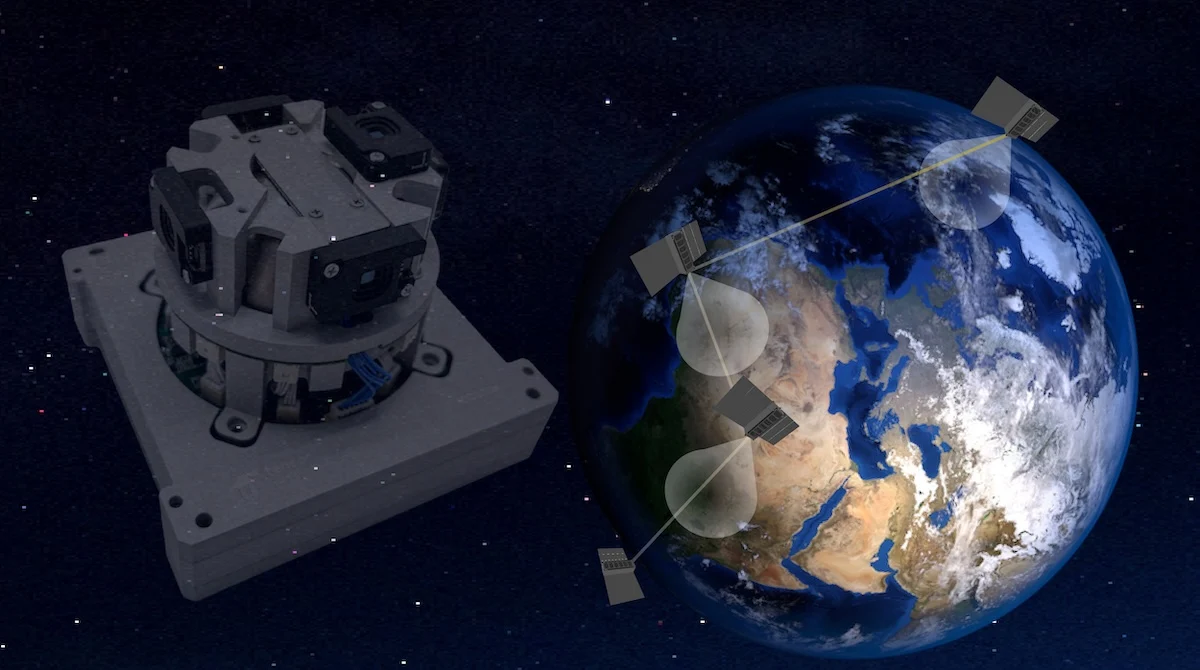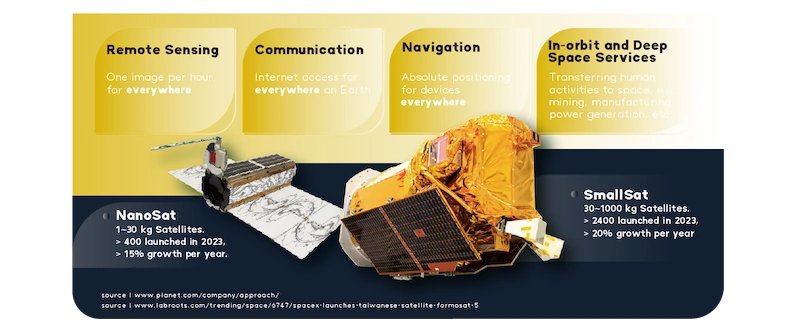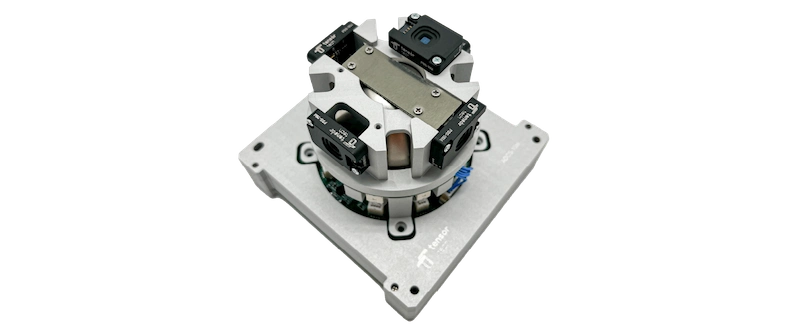How to pick up a suitable CubeSat ADCS

Authored by Thomas Yen, 2021.05.01
Revised by Afan Huang, 2025.11.24
As the era of space agency-driven projects comes to a close, commercial clients are increasingly turning to Commercial-Off-The-Shelf (COTS) ADCS components. Additionally, integrated ADCS solutions are now available, offering the benefits of reduced mission development time and costs.
To make informed decisions, it is crucial to understand the specifications, advantages, and disadvantages of these components and systems. This article provides guidelines to help analyze your mission requirements and determine the appropriate pointing accuracy and slew rate for your ADCS.
What is ADCS?
An Attitude Determination and Control System (ADCS) is a subsystem in satellites that manages spacecraft orientation in space. It consists of two primary functions: attitude determination, which uses sensors like star trackers, sun sensors, and magnetometers to measure the satellite's current orientation, and attitude control, which employs actuators such as reaction wheels, magnetorquers, and thrusters to adjust and maintain the desired attitude. The ADCS continuously monitors the satellite's orientation, compares it with mission requirements, and makes corrections to ensure the spacecraft maintains its intended pointing direction. This system is essential for various satellite operations, including Earth observation, where precise camera alignment is needed, communications, which requires antenna pointing toward ground stations or other satellites, and solar power generation, where panels must track the sun for optimal energy collection. Modern ADCS solutions range from simple passive systems using gravity gradient stabilization to sophisticated active systems capable of sub-arcsecond pointing accuracy.
〈Further Reading:Attitude Determination and Control Systems (ADCS): An In-Depth Analysis from Sensing to Control〉
How ADCS Affects Pointing Precision
The satellite pointing accuracy is primarily determined by the functional payloads of the satellite, which are typically cameras for remote sensing satellites or antennas for communication satellites. For remote sensing applications, pointing accuracy of up to several hundred arcseconds is frequently required. In contrast, communication satellites typically necessitate pointing accuracy of approximately 1 degree when equipped with S-band or X-band antennas. If the satellite is equipped solely with UHF and VHF antennas, a less precise pointing accuracy of up to 10 degrees may be deemed acceptable, given that these antennas are typically omnidirectional. However, it is important to note that the quality of communication may be compromised if the satellite's attitude drifts.
〈Further Reading:Keys toward precise attitude control〉

How Space can Improve Life on Earth?
ADCS for Sun Avoidance and Solar Panel Pointing
Furthermore, if the satellite incorporates optical payloads, such as nadir-facing cameras or star trackers, the Attitude Determination and Control System (ADCS) is responsible for ensuring that the sun does not enter the field of view (FOV) of these instruments.
For solar panels, particularly those designed for deployment, optimal power generation necessitates precise sun-pointing. When utilizing deployable solar panels, it is advised that the pointing accuracy to the sun be maintained within +/- 10 degrees.
〈Further Reading:An introduction to fine sun sensors〉
These are the key factors to consider when determining the pointing accuracy requirements for your mission. Next, we will discuss the slew rate.
ADCS Slew Rate and Tumbling Control
In most satellite operations, it is generally undesirable for the satellite to exceed an angular velocity of 5 degrees per second (relative to the Earth-centered, Earth-fixed frame). If the satellite rotates faster than this threshold, it is often referred to as "tumbling." Therefore, the ADCS slew rate should typically be set to less than 5 degrees per second. The required slew rate can be determined by considering the number of specific locations your payload needs to target within a given timeframe.
It is important to note that integrated ADCS systems, reaction wheels, or magnetorquers may not always specify their slew rate directly. In such cases, you can calculate it using the moment of inertia (MOI) of your satellite and the maximum torque provided by the ADCS.

ADCS
How to Pick up A Suitable ADCS
Selecting an appropriate ADCS for your CubeSat mission requires evaluation of several key factors. First, consider your mission requirements: different applications demand vastly different capabilities—a high-resolution Earth observation mission may require pointing accuracy better than 0.01 degrees, while a basic communications satellite might operate effectively with 1-2 degree accuracy. Second, satellite size and volume constraints are critical, as CubeSats have limited space for ADCS components; a 1U CubeSat has significantly different accommodation capabilities compared to a 6U or 12U platform, affecting which integrated systems or individual components can be integrated.
Budget considerations play a substantial role in ADCS selection. Integrated COTS ADCS solutions typically offer faster development timelines and reduced risk but may come at higher unit costs, while custom-built systems using individual components might reduce hardware expenses but increase development time and engineering costs. The trade-off between cost, performance, and schedule must align with your mission priorities.
Pointing accuracy requirements should be carefully matched to your payload needs—over-specifying accuracy unnecessarily increases cost and complexity, while under-specifying compromises mission success. Finally, the required slew rate depends on your operational concept: if your satellite needs to rapidly retarget between multiple ground targets or track moving objects, you'll need actuators capable of higher angular rates and greater torque output. For missions requiring agile reorientation and high slew rates, advanced solutions like Control Moment Gyroscopes may be necessary.
〈Further Reading:What Is a Control Moment Gyroscope (CMG)? A Powerful Solution for Satellite Attitude Control〉
Conclusion
In engineering, there is no absolute "best" solution—only the most suitable one. This has led to the current trend of building Attitude Determination and Control Systems (ADCS) by either customizing space components or, in some cases, developing proprietary attitude determination and control components.

